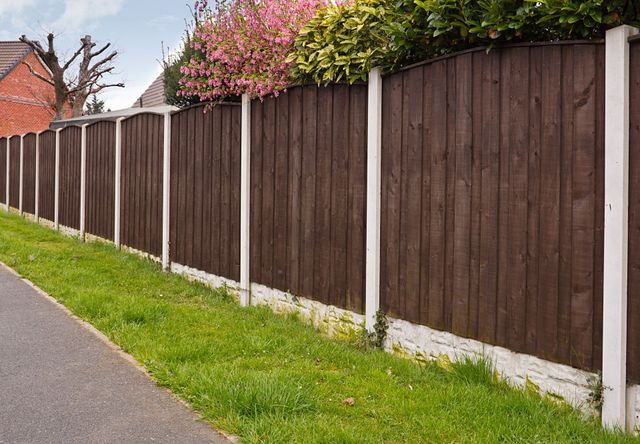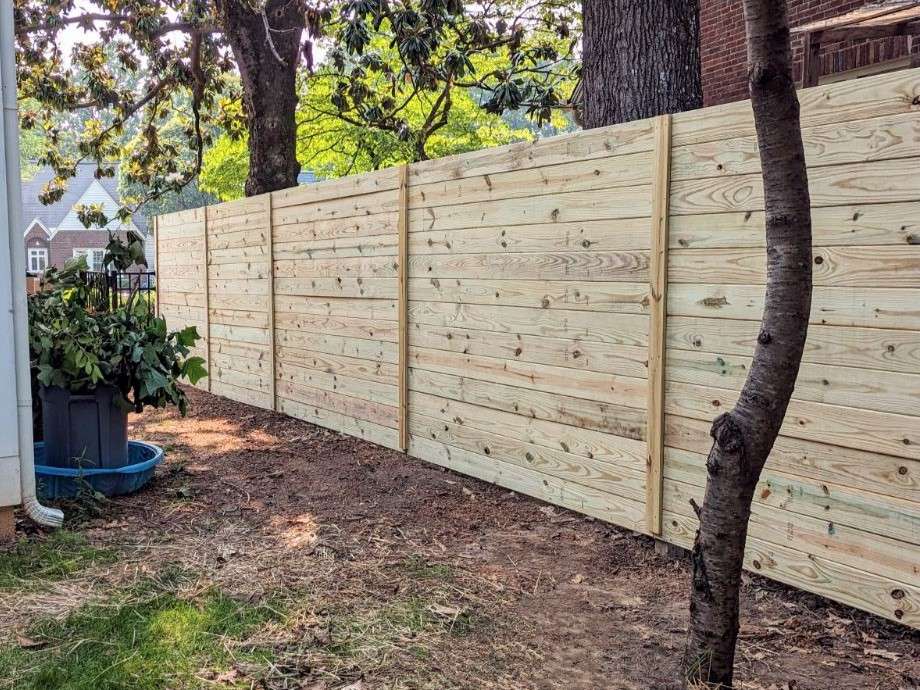All Categories
Featured
When it comes to preserving a wood fence, home owners frequently encounter the choice of whether to paint or stain. Both choices have their cons and pros, and the selection eventually depends on your aesthetic preferences, the kind of timber, and just how much maintenance you agree to commit to. Right here's a comprehensive comparison to assist you make an educated choice.
The Fundamentals of Paint and Staining
Painting includes covering the wood with a nontransparent layer of shade. It provides total protection, hiding the timber grain while supplying excellent protection versus environmental aspects.
Discoloring permeates the timber, improving its all-natural appeal while adding a protective layer. Depending on the type, discolorations can range from transparent to solid, permitting varying degrees of wood grain visibility.
Benefits And Drawbacks of Painting
Pros:
Large Range of Color styles: Repaint offers countless shade alternatives, allowing you to match your fence to your home's outside or individual design.
Longer Enduring: High-quality outside paint can last as much as 5-7 years, requiring less frequent reapplication.
Superior Security: Repaint types a thick, solid obstacle versus wetness, UV rays, and bugs.
Disadvantages:
Peeling and Splitting: In time, paint can fracture or peel off, especially in areas with severe weather.
Hides Natural Wood Beauty: If you enjoy the all-natural grain of timber, paint may not be the ideal selection.
Greater Upkeep: Repainting needs removing the old paint, which can be labor-intensive.
![]()
Advantages And Disadvantages of Discoloration
Pros:
Natural Appearance: Discolorations protect and enhance the all-natural elegance of the timber, making it excellent for high-quality timber like cedar or redwood.
Much Easier to Reapply: Unlike paint, spots don't break or peel. Reapplying discolor generally needs less surface prep work.
Flexible End Up Choices: Discolorations come in clear, semi-transparent, and solid selections, using different levels of insurance coverage.
Cons:
![]()
Much Shorter Life Expectancy: Stains, semi-transparent and specifically clear ones, may need reapplication every 2-3 years.
Restricted Shade Choices: While stains offer natural tones, they do not have the wide color combination offered with paint.
Much Less Protective: Spots permeate the timber yet don't supply as thick an obstacle as paint, making them slightly less protective versus extreme climate.
Elements to Take Into Consideration
Visual Preferences: If you desire vibrant colors and full coverage, paint is the way to go. For a natural and rustic look, decide for stain.
Timber Type: High-quality woods with attractive grains take advantage of staining, while lower-grade timbers can be painted for a sleek look.
![]()
Environment: In damp or moist environments, paint's thicker barrier might use better protection. In moderate or dry climates, spots can be sufficient.
Upkeep Dedication: Painting entails less constant reapplication however even more initiative during touch-ups. Staining needs regular maintenance but is much easier to take care of.
Last Ideas
Both painting and staining can effectively secure and beautify your wood fence. The most effective alternative depends upon your concerns, whether they favor aesthetics, longevity, or ease of upkeep. By comprehending the advantages and disadvantages of each, you can choose the finish that straightens with your needs and ensures your fencing remains a standout function of your building for many years to find.
The Fundamentals of Paint and Staining
Painting includes covering the wood with a nontransparent layer of shade. It provides total protection, hiding the timber grain while supplying excellent protection versus environmental aspects.
Discoloring permeates the timber, improving its all-natural appeal while adding a protective layer. Depending on the type, discolorations can range from transparent to solid, permitting varying degrees of wood grain visibility.
Benefits And Drawbacks of Painting
Pros:
Large Range of Color styles: Repaint offers countless shade alternatives, allowing you to match your fence to your home's outside or individual design.
Longer Enduring: High-quality outside paint can last as much as 5-7 years, requiring less frequent reapplication.
Superior Security: Repaint types a thick, solid obstacle versus wetness, UV rays, and bugs.
Disadvantages:
Peeling and Splitting: In time, paint can fracture or peel off, especially in areas with severe weather.
Hides Natural Wood Beauty: If you enjoy the all-natural grain of timber, paint may not be the ideal selection.
Greater Upkeep: Repainting needs removing the old paint, which can be labor-intensive.

Advantages And Disadvantages of Discoloration
Pros:
Natural Appearance: Discolorations protect and enhance the all-natural elegance of the timber, making it excellent for high-quality timber like cedar or redwood.
Much Easier to Reapply: Unlike paint, spots don't break or peel. Reapplying discolor generally needs less surface prep work.
Flexible End Up Choices: Discolorations come in clear, semi-transparent, and solid selections, using different levels of insurance coverage.
Cons:

Much Shorter Life Expectancy: Stains, semi-transparent and specifically clear ones, may need reapplication every 2-3 years.
Restricted Shade Choices: While stains offer natural tones, they do not have the wide color combination offered with paint.
Much Less Protective: Spots permeate the timber yet don't supply as thick an obstacle as paint, making them slightly less protective versus extreme climate.
Elements to Take Into Consideration
Visual Preferences: If you desire vibrant colors and full coverage, paint is the way to go. For a natural and rustic look, decide for stain.
Timber Type: High-quality woods with attractive grains take advantage of staining, while lower-grade timbers can be painted for a sleek look.

Environment: In damp or moist environments, paint's thicker barrier might use better protection. In moderate or dry climates, spots can be sufficient.
Upkeep Dedication: Painting entails less constant reapplication however even more initiative during touch-ups. Staining needs regular maintenance but is much easier to take care of.
Last Ideas
Both painting and staining can effectively secure and beautify your wood fence. The most effective alternative depends upon your concerns, whether they favor aesthetics, longevity, or ease of upkeep. By comprehending the advantages and disadvantages of each, you can choose the finish that straightens with your needs and ensures your fencing remains a standout function of your building for many years to find.
Latest Posts
Find Brake Repair & More: Full Repair Options from Montclare Auto Repair
Published en
1 min read
Reasons Routine Vehicle Maintenance at Montclare Auto Repair Reduces Costs
Published en
1 min read
Discover Oil Changes & More: Full Auto Care Solutions from Montclare Auto Repair
Published en
1 min read
More
Latest Posts
Find Brake Repair & More: Full Repair Options from Montclare Auto Repair
Published May 27, 25
1 min read
Reasons Routine Vehicle Maintenance at Montclare Auto Repair Reduces Costs
Published May 27, 25
1 min read
Discover Oil Changes & More: Full Auto Care Solutions from Montclare Auto Repair
Published May 26, 25
1 min read